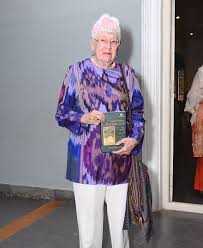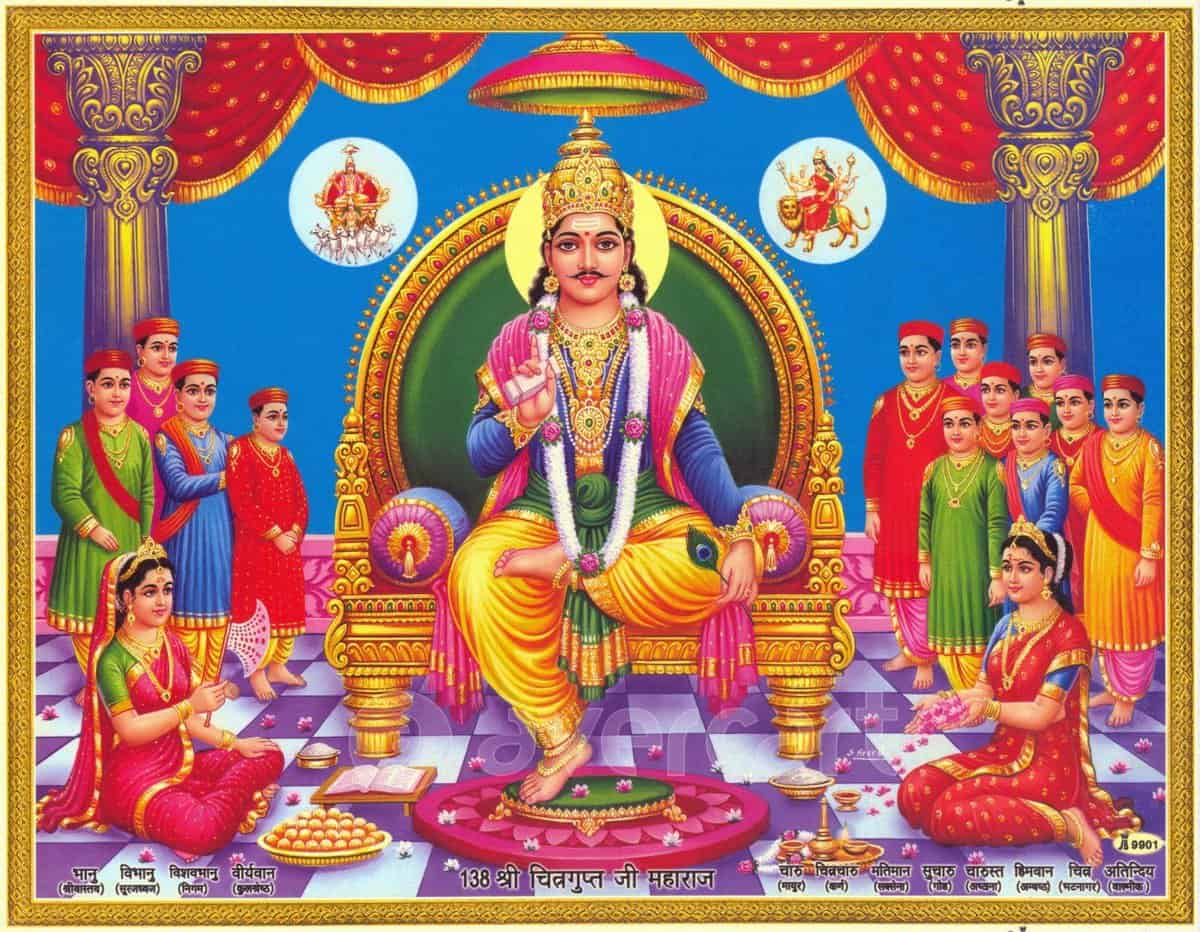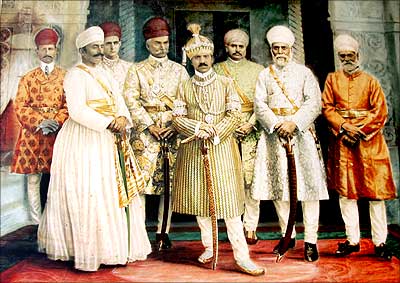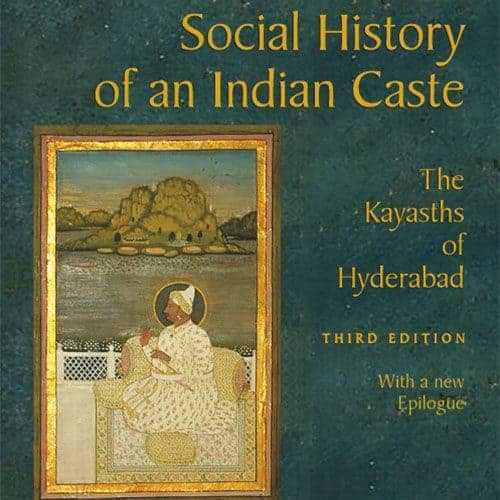In 1899, amidst a grandiose birthday celebration of the monarch India’s most feudal and richest Princely State, Nizam VI Mehboob Ali Pasha heaped the following praise upon members of the Kayasth Sadr Sabha.
“You have had an uninterrupted connection with the Muslims both in State service and social intercourse…I always view your loyal services and submissive behavior with an appreciative eye.”
The KSS almost exclusively consisted of a Mathur sub-caste that held coveted administrative positions in Muslim-ruled Hyderabad along with those from the overall Kayasth caste who left their imprints on the city and state.
Along with the speech excerpts like the one above, retired Professor Karen Isaksen Leonard’s academic, rigorously researched book The Kayasths of Hyderabad is rife with fascinating historical analysis about this Hindu caste. This is a group of people without whom any discussion regarding the past, present and future of Hyderabad, Telangana is incomplete.

Who are they?
A non-Telanganite witnessing a conversation between a Hyderabadi Muslim and someone with any of those Hindu last names would have a hard time determining who is Hindu and who is Muslim. Hyderabadi Kayasths are jokingly referred to as “Aadhe Musalman (half-Muslim)” by both communities.
Although the early origins of the Kayasth caste are highly debated. But in a society where one’s affiliation to one of the four broader varnas — Brahmin, Kshatriya, Vaishya or Shudra — has various implications, Kayasths cannot exactly be boxed in either one of those strata.
Leonard begins her book with debates regarding the actual emergence of this unique caste. Much before this caste contributed their talents to Hyderabad, North India Chitragupta Kayasths, the Prabhu Kayasths of Maharashtra and Bengal Kayasths fulfilled the function of record-keepers and bureaucrats.
Depending on where they were in India, sometimes they were classified as Brahmins, Kshatriyas (warriors and rulers) or Shudras (peasants). One of the stories which the author points out about their origins is that after Lord Brahma created the four varnas, he then “summoned the first Kayasth named Chitragupta, with a pen and inkpot in hand to record the activities of all men.”

The legend then follows “from Chitragupta’s first wife were born the Mathurs, Bhatnagars, Saxenas and Srivastavas; from the second wife the Gaurs, Nigams, Asthanas, Surjdwaj, Amasthas, Karans, Kulshreshtas and Balmiks.”
These are all sub-castes within this fifth and/or distinct varna.
The co-opted caste
Further on, Leonard then delves into the trajectory of Kayasths from North India to the Deccan.
They were traditionally a writing caste whose prowess with Persian made them valuable to the Mughal administration. Naturally, these folks were indispensable for Mughal Muslim rulers as they were among the first to guzzle up the finer nuances of Farsi when Allaudin Khilji expanded his footprint into the subcontinent.
Plus, Kayasths were among the numerous bridges between Muslim Mughals and Hindus.
After the first Nizam Mir Qamaruddin Khan helped expand Aurangzeb’s empire into the Deccan, he slowly began to break away from the Mughals and consolidate his own power base in the Deccan.
The Deccan then began absorbing the cultural and political vestiges of the crumbling Mughal Empire. The Nizams ensured that Kayasths were a part of this flight of talent from the North to Hyderabad.
Despite opposition from many Paigah feudals and “mulkis” (natives), Hindus and Muslims from North India were brought in to help usher new reforms to the administration.
Ever since then, they have been sons and daughters of the soil.

Kayasths were the equivalents of Darbari Muslims and Kashmiri Pandiths of Dogra-Hindu ruled Jammu & Kashmir. Like a small percentage of the former, they were the co-opted class of subjects belonging to the religious majority by the ruling minority. They were analogous to the latter considering the Kayasths’ prominence as powerful ministers, able bureaucrats and learned academics.
The transition
Towards the tail-end of the narrative, Leonard then smoothly elaborates how Kayasths began veering towards English education especially with the Mathurs establishing their own English medium schools.
That too, even before the accession of Hyderabad to India which heralded in a new social, cultural and political era. Plus, the presence of the real paramount power always hovering over the Nizams pushed many state subjects towards the language too.
While there were those that stood loyal to the Nizam for better or worse, during the contentious process of Hyderabad’s accession to India, some from the co-opted caste began veering towards the Arya Samaj and other religious revivalist factions. Alongside the Razakars who committed atrocities against Hindus, many of these organisations inflicted violence upon Muslims throughout the erstwhile Princely State.
Times are a changin’
After the accession, most Kayasths began furthering a process of learning English as Telugu is not exactly their mother tongue. To varying degrees, some still speak in Deccani parlance and some prominent elder Kayasths are still active in Urdu literary circles.
For the most part though, Urdu now is more of a past relic for them as well as Muslims to a lesser extent. Like Hyderabadis and Indians of a certain class, they instead perfected their spoken and written English.
Besides it renders one more employable than Urdu unfortunately.

Leonard’s networks among her subjects and her sheer drive to stay informed about them and is on display when she many well-known Hyderabadi personalities.
The Kayasth youth’s proficiency in English equipped them better for private sector jobs in Hyderabad and abroad.
The anonymous answers Leonard receives from Mathurs of different age groups about how they feel about their past, present and future trajectories are alone worth (re)reading The Kayasths of Hyderabad.
In the latest edition’s epilogue, Leonard quotes one of the older Mathurs who celebrates the Ganga-Jamuna tehzeeb that his biradari helped cement. However, the younger Mathur’s differing opinion below may or may not be a sign of things to come.
“To be honest, unlike many of my Mathur relatives, I am not so proud of our affiliation to the Nizam. Mathurs savour the fact that we served royalty and we can still see it reflecting in our lifestyle. Though the circumstances have changed since 1948, we have not woken up to a new reality. Living on the largesse of the Nizam for long…[we] imbibed a lot of cultural traits from the Nizam and ignored our ‘native past’…The new generation is now questioning that and changing its style…The Nizams and their Razakars have inflicted a lot of pain on the Hindus of Telangana…It is time to shed that legacy and move ahead.“

